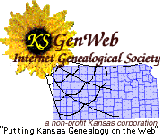
|

Decyphering Old Handwriting |

|
Deciphering Old Handwriting
From a course taught by Sabina J. Murray
Not only have our words and their meanings changed
throughout the years, the way we form the letters have too. In order to get
the most information from the records that are available, we have to
decipher these records and put meaning into the symbols we see on the old
documents or papers that we find. As we read old Bible, census, courthouse,
archive and Church records to obtain the names, places and dates, often we
are unclear at the words before us. Also, the further back we go - the
harder it is to read. An important note to remember is that much of the
writing is "phonetic." They wrote the name the best that they could by how
it sounded. This on-line tutorial will help you understand these old records
better.
The Leading "s"

One of the most dramatic changes in letters has been the letter "s."
Here is a regular lower case "s" and another "s" that looks like a backward
lower case "f." 
Over 100 years
ago the "s" was often written like a backward "f." This strange symbol for
"s" was used very commonly in instances where there was a "double s." The
unusual s first, called the "leading s." Then the regular s. Sabina came
across this name, early in her research experience, in the U.S. Census. She
interpreted this name to be "Jefse" (after all, there are some very unusual
names on these records) Later on she found out about the correct translation
and felt a little foolish. The true translation is "Jesse."
How the "leading s" looks in old
documents.
Old Style Abbreviations Some of the writing
looks like our modern day shorthand. To save paper and time, abbreviations
were used often. Here are some of the things you will encounter:

Lines were often used in abbreviations. They can be found over, under
and through any given abbreviation.

Smaller letters (both top and bottom) are common.

Single and double dots are used in a
variety of positions. Here are some great examples of abbreviations in old
style lettering that you will find on the US Census and many other types of
records:
Proper Names
| Places of Birth |
Occupations
Marks

When we think about someone's
mark, we usually think of an "x." But, there were many different kinds. Many
of our ancestors could not write. Many of the signatures on wills and other
legal documents were signed by a court clerk, while the person made his or
her "mark." Even if they could write, many people still used marks.
Look at some of these examples of marks:
Marks
Numbers
were also different.

Here is a
good example of how an "8" can look much like the number "6." Are ready to
try for yourself? Try to decipher these:

Decipher
I

Decipher II
Now you
are ready to try to solve the mystery that had Sabina stumped for many
years...
This is from the will of Doctor Jonathan Eammis from
Montgomery County, Georgia in 1797.

The good Doctor left his dear friend Sands Standle, his still (medicinal
purposes only), a rifle, a barrel shotgun, his notes of hand, personal
estate, and even his wearing apparel. He also left Sands Standle's wife a
silver watch and...

A horse named
Clumse.
Here is the big mystery...
What is
the name of Sands Standle's wife???

This puzzle was presented to many experts in the genealogical field over
a period of 4-5 years. No one could give Sabina an answer. This was the only
record that Sabina had found that mentioned this person's name. She wondered
why the letter "t" was in the name. And it seemed that there should be a
CAPITAL "T" instead of the apparent lower case letter.
How
the Answer Was Found...
Sabina deciphered many documents
over the years. One day she saw the letter "A" in a document that looked
just like the one in the mystery name.

Here are some examples of CAPITAL "A's" that are all squished together.
She immediately made the connection to her long time puzzle. The
mystery was solved!!!

Here is the name again. Can you tell now? Try to decipher this for a
minute before going to the answer. Remember it took her years.
The ANSWER
The KSGenWeb logo was designed and is copyrighted by
Tom & Carolyn Ward
for the limited use of the KSGenWeb Project.
Permission is granted for use only on an official KSGenWeb page.
The USGenWeb Logo was designed by Linda Cole.

 |
|
 KSGenWeb Project
KSGenWeb Project |




















